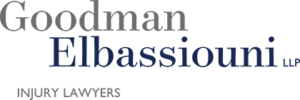The Ontario’s Occupier’s Liability Act states as follows:
Occupier’s duty
3 (1) An occupier of premises owes a duty to take such care as in all the circumstances of the case is reasonable to see that persons entering on the premises, and the property brought on the premises by those persons are reasonably safe while on the premises.
In the City of Toronto, if snow accumulation is 2cm or less in depth, it is up to residents and businesses to clear their sidewalks of snow and ice within 12 hours of the end of a snowfall. Property owners are responsible to clear snow and ice from private property including driveways, parking spaces, steps, ramps, and landings within 24 hours after a snowfall ends. Other cities have enacted similar bylaws. If an Ontario homeowner fails to take reasonable steps to ensure that their property is as safe as possible for potential visitors, they may be liable for damages for someone who slips and falls on their property. Homeowners should also apply salt, sand, or other suitable material to slippery surfaces.
NOTE: The Occupier’s Liability Act (6.1 (1) states that no action for the recovery of damages of personal injury caused by snow or ice may be brought unless written notice is provided to the occupiers of the premises within 60 days of an incident outlining the date, time, and location of the occurrence.
